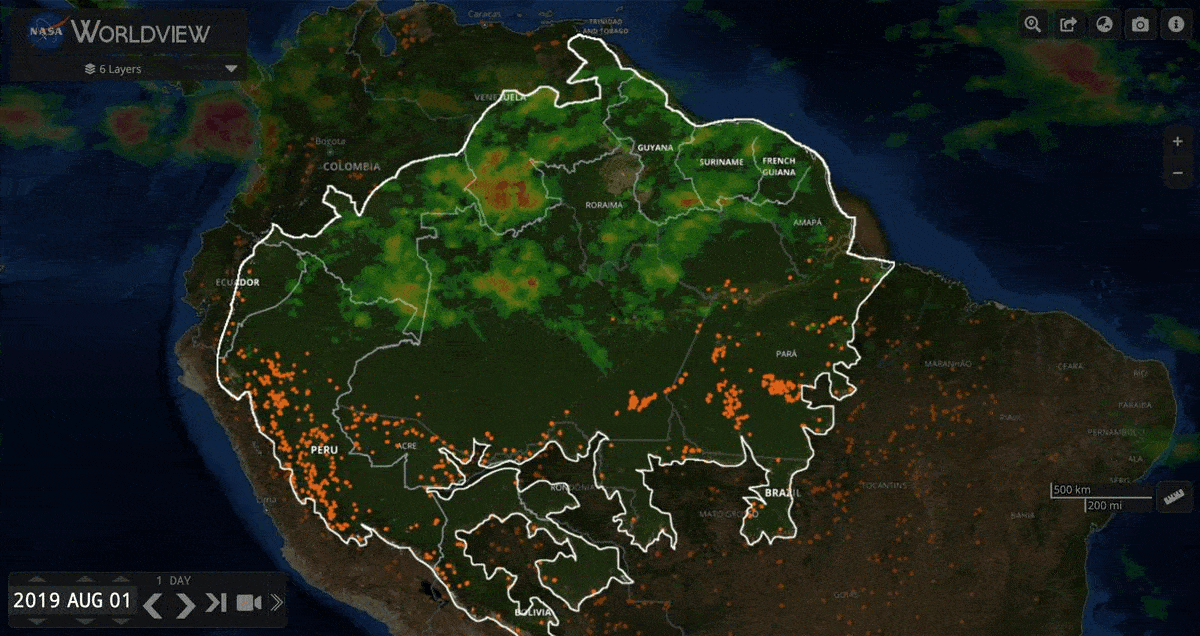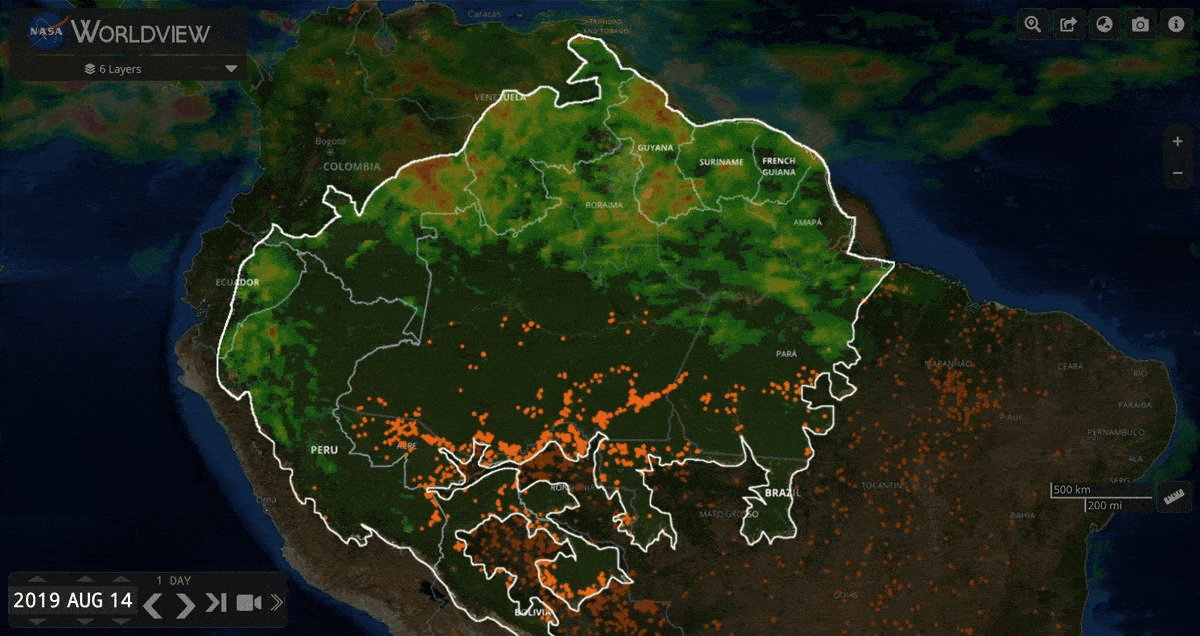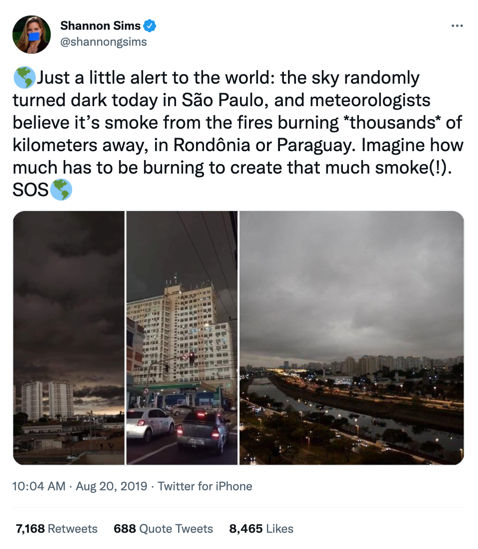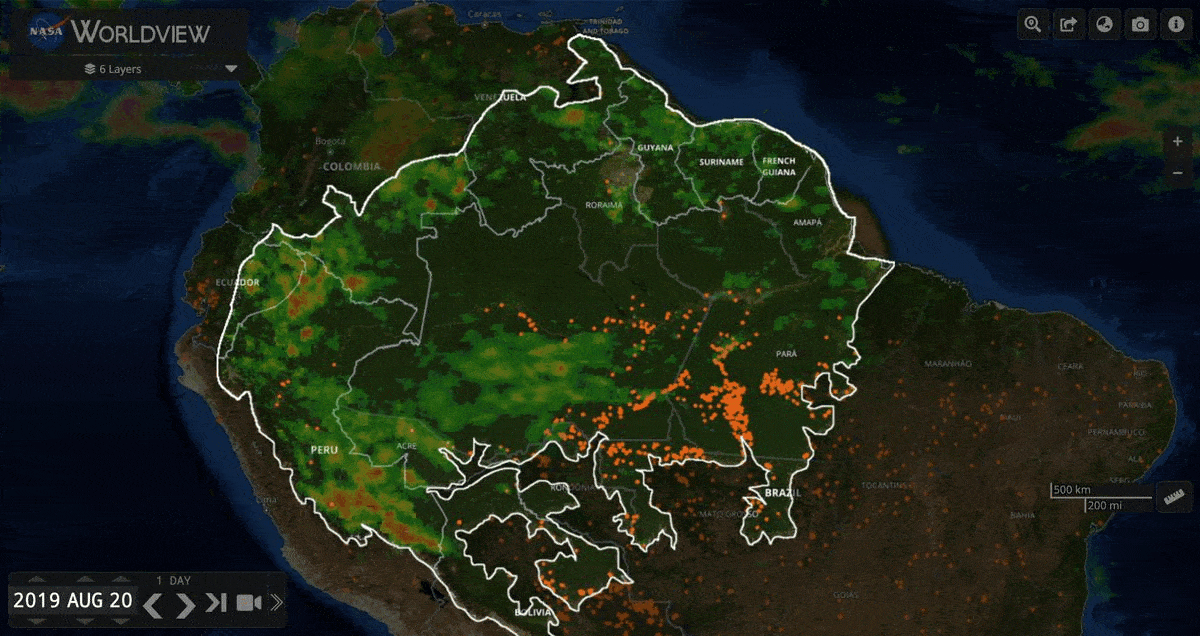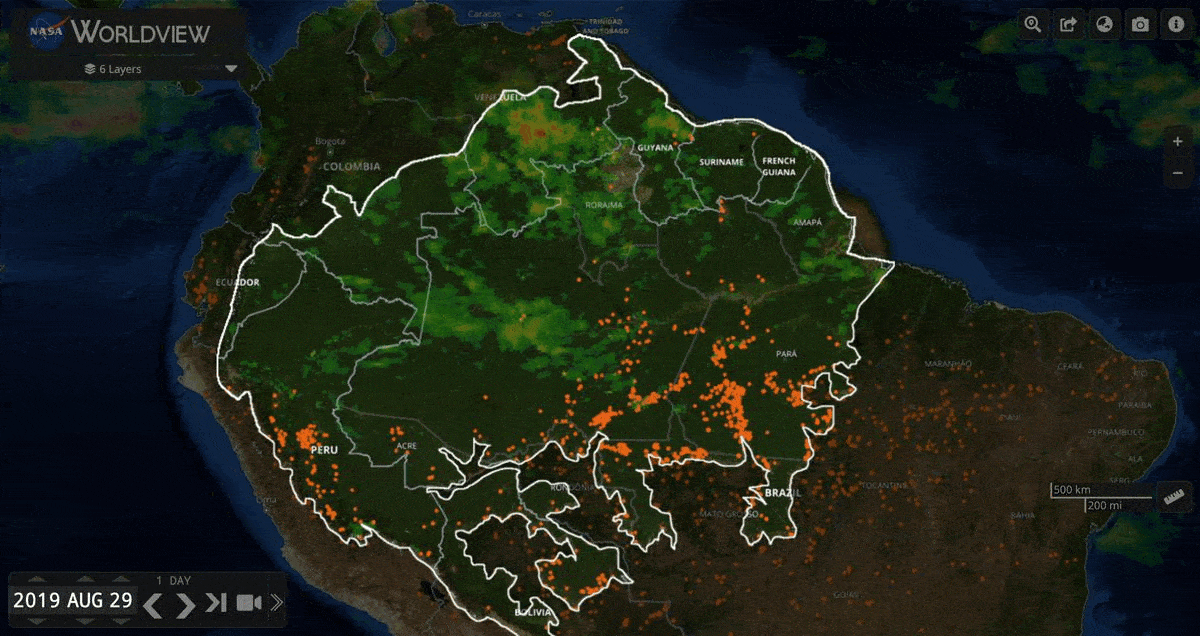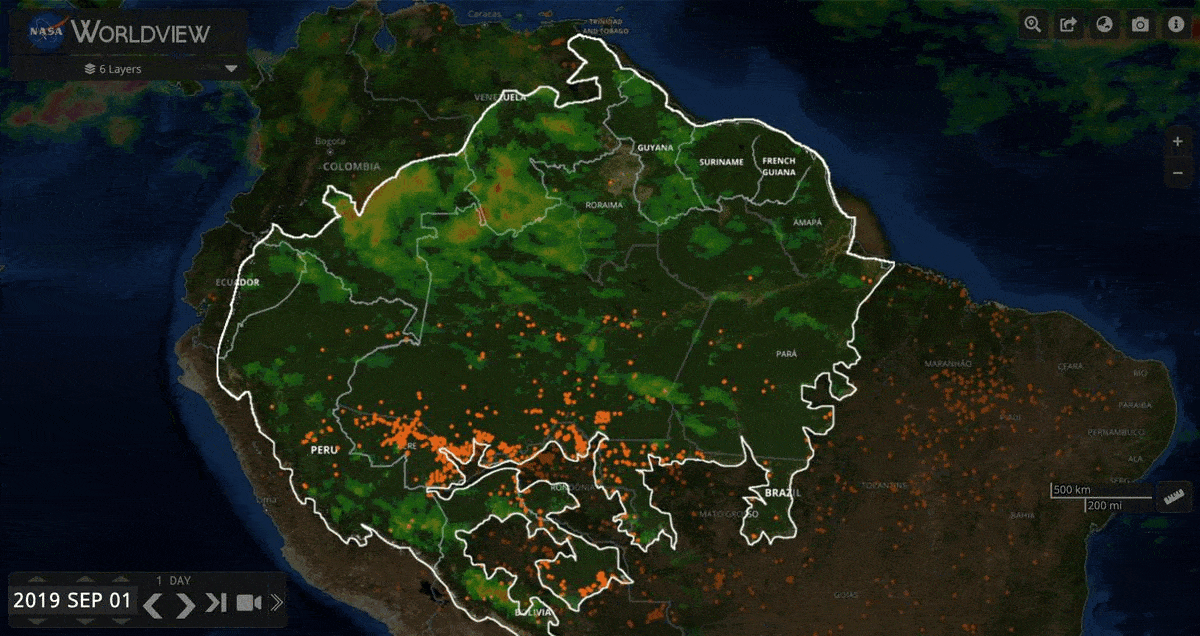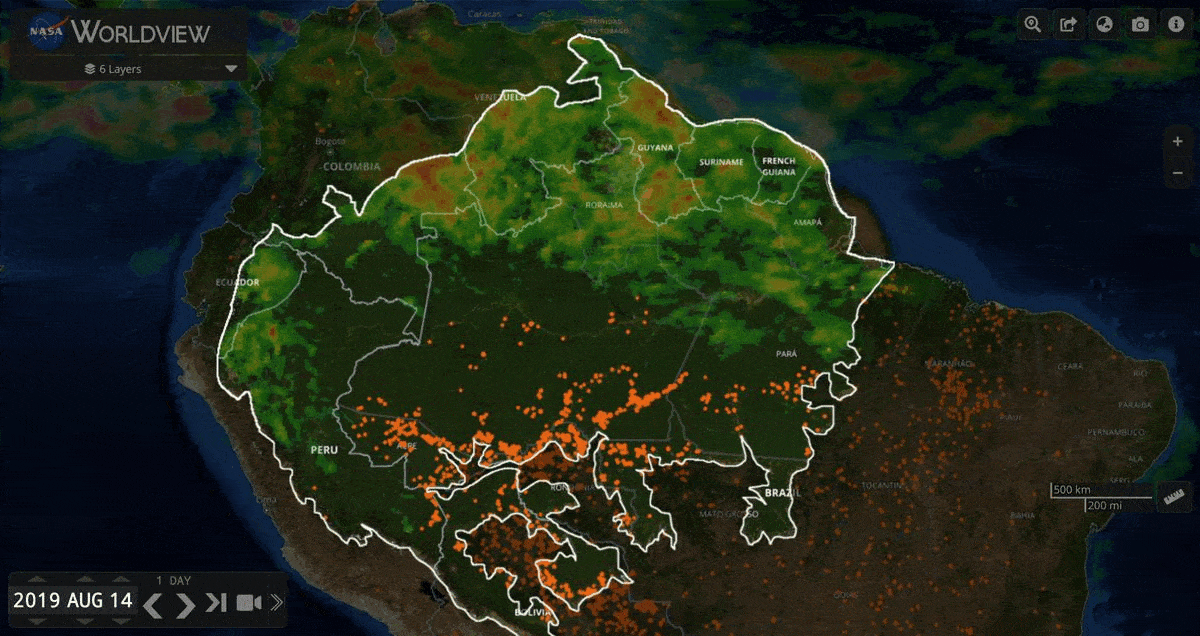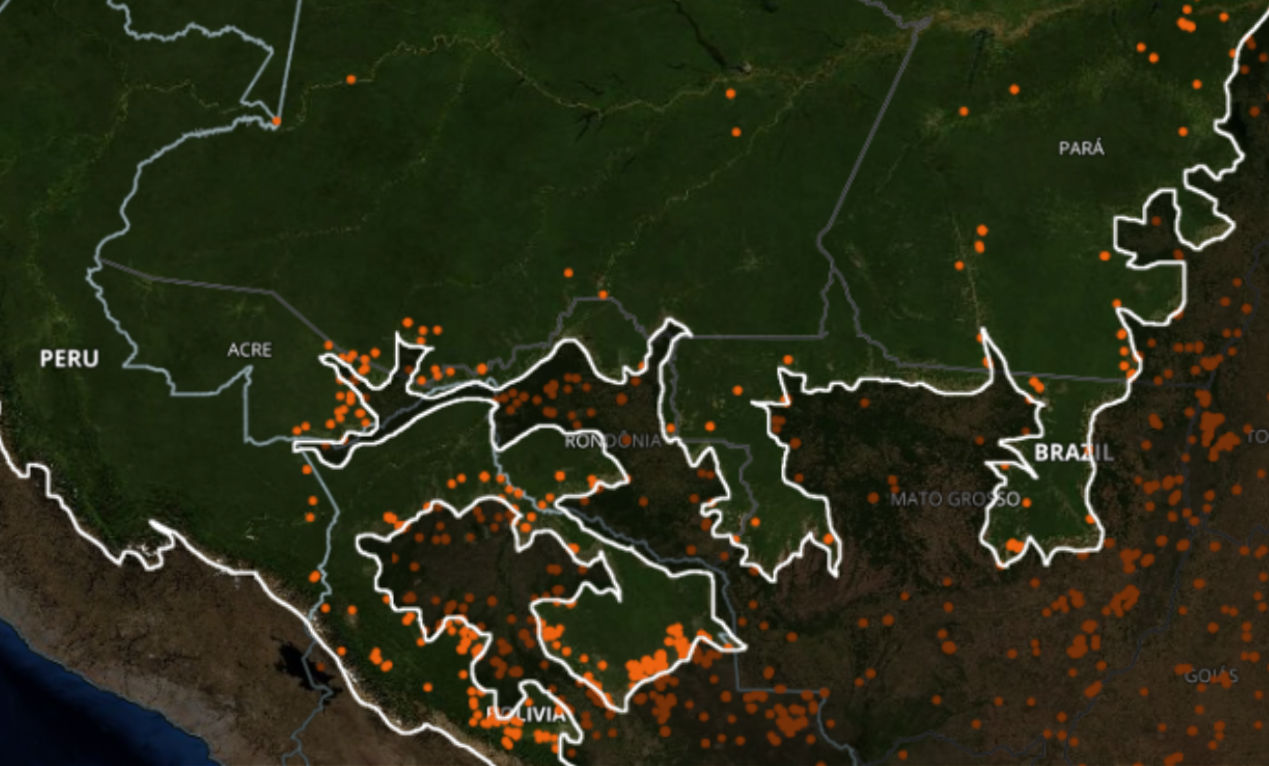Overview
Numerous parts of the Amazon Rainforest had been burning since May 2019. As of July 2019, 469,900 hectares of rainforests had been lost to the fires, with 225,500 hectares of forests being burnt in July alone. On 12 August 2019, the state of Amazonas, Brazil, declared a state of emergency over the rising number of forest fires. On 14 August 2019, the smoke billowing from the fires covered an area almost the size of the European Union.
Outcome
Rains swept across fires in the heart of the Amazon Rainforest much earlier than meteorologists anticipated. Unfortunately, fires returned as farmers and ranchers continued to set the forests alight.
Crisis Situation
- Fires across the Amazon Rainforests started by people to expand cattle-ranching, soybean farming, and other agribusinesses
- As of July 2019, 469 900 hectares of rainforests — a size bigger than Switzerland — had been lost to fire
- Rain sufficient enough to put out the Amazonian forest fires was forecasted to only arrive in October 2019
Timeline of Events
Skip to sectionWhile the worsening Amazon drought exacerbated the fires, most of the fires in the Amazon were believed to be started by people intent on clearing the land for cattle ranching, soybean farming, and other agribusinesses. President of Brazil, Jair Bolsonaro, was also blamed for undercutting conservation efforts and encouraging ranchers, farmers, and corporations to further exploit the rainforest due to his pro-business stance. Pressured by world leaders who considered the fires in the Amazon an “international crisis”, the Brazilian Government dispatched 44,000 troops to combat the wildfires on 24 August 2019.
Unfortunately, rain forecasts in the region were not encouraging. Rain across a period of 15 days would only be concentrated in areas that need it the least, while less rain was expected in parts experiencing the worst fires.
“The whole area needs it to rain more regularly, and this will only happen further down the line, around October.” - Maria Silva Dias, a professor of atmospheric sciences at the University of Sao Paulo
Kyrios was alerted to the crisis and decided to begin intervention on 14 August 2019. Kyrios said that the two world’s largest rainforests – Amazon and Congo rainforests – function as the lungs of the world, and damage to the rainforests would result in severe consequences for the rest of the world. Concurrently, Kyrios was also intervening in several wildfires across the Arctic Circle such as Siberia (Russia), Greenland, Canada and Alaska, as well as in Spain, Australia and Africa.
Why Did Kyrios Intervene? Kyrios Explains The Disastrous Implications If Burning Continues
The Amazon Rainforest is part of a system that regulates and balances Earth’s temperature. It is popularly known as the “lungs of the earth” as it is home to vast quantities of dense vegetation that produces a significant amount of fresh oxygen and negative ions while absorbing carbon dioxide from the atmosphere. Kyrios explained that trees and its symbiotic relationship with the soil beneath is akin to an air purification system where the active surface soil layers absorb impure air and in turn releases clean air and excess heat.
Kyrios pointed out that the Amazon rainforest ecosystem serves an important function, which is to not only cool the Earth’s surface, but also the Earth’s core. Thus when the forests are destroyed, Earth’s ability to regulate its surface and core temperatures will be hindered.
Kyrios further elaborated that the result would be a build up of heat not only in the atmospheric level, heat will also travel laterally across the Earth crust and downward to the mantle and core. The excess heat trapped in Earth’s inner layers will then be released through geologic means such as volcanoes, hydrothermal vents, hot springs, and geysers, which will lead to an increase in the frequency and magnitude of tectonic and seismic activities.
Kyrios warned that if deforestation and the burning of rainforests continues, sea levels will rise as glaciers and ice sheets melt, tsunamis will sweep across continents, droughts will become commonplace, and heatwaves across the world may reach scorching temperatures of 50-80 degrees Celsius, among many other extreme weather events. In the future, the heat will be so intense that even air conditioning cannot reduce indoor temperatures. Water flowing from taps will be hot, and Earth’s soil will become cracked, dry, and no longer be able to grow food crops.
In lieu of the disastrous consequences that Kyrios foresaw, Kyrios urges everyone and world leaders to take better care of the world’s natural systems and to not exploit Earth’s resources for one’s benefit. Kyrios stressed the need for individuals to reduce their carbon footprint, such as by adopting plant-based diets as livestock production is the reason why the Amazon Rainforest is currently being destroyed, to make way for cattle ranching.
How Did Kyrios Contain The Wildfires In The Amazon Rainforest?
Kyrios initiated a series of interventive efforts beginning on 14 August 2019 to alleviate fires in the Amazon Rainforest by bringing rain across the burning regions.. Between 31 August 2019 to 6 September 2019, persistent and concentrated precipitation ensued over the central and southern reaches of Amazon rainforests where the fires were most intense. The rains brought on by Kyrios had defied meteorological forecasts which forecasted that “rains would be concentrated in areas that need it least for the next 15 days following 28 August 2019”. By 6 September 2019, most of the fires in the Amazonian heartlands were put out.
However, along the fringes of the Amazon Rainforest, some fires persisted while new hotspots began to appear again after Kyrios’ intervention ended. A closer look at satellite imagery showed that the fires were mostly burning along the perimeters of farmed lands, a visible indication of ongoing slash-and-burn activities where forests were being set ablaze to clear land and make way for agriculture, livestock, logging, mining, etc.
This observation can be confirmed by Paulo Artaxo, an atmospheric physicist at the University of São Paulo, who told Science Magazine that, “The blazes are surging in a pattern typical of forest clearing, along the edges of the agricultural frontier. There is no doubt that this rise in fire activity is associated with a sharp rise in deforestation.” Historical data show the two phenomena are closely linked: Chainsaws lead the way, followed by flames, and then cattle or other forms of development.
Why didn’t Kyrios continue intervention after 6 September 2019?
While Kyrios can bring rains to help put out large scale wildfires that are out of reach by firefighters, Kyrios said that efforts to put out the human-induced fires at the Amazon will be counterproductive if people continue to act irresponsibly and indiscriminately burn the forests. People must understand that the root causes of disasters lay in human hands. Without a cessation in deforestation activities, humanity’s survival and well-being will always be in danger. A united effort to conserve and reforest the rainforests is necessary to reduce disasters globally.
